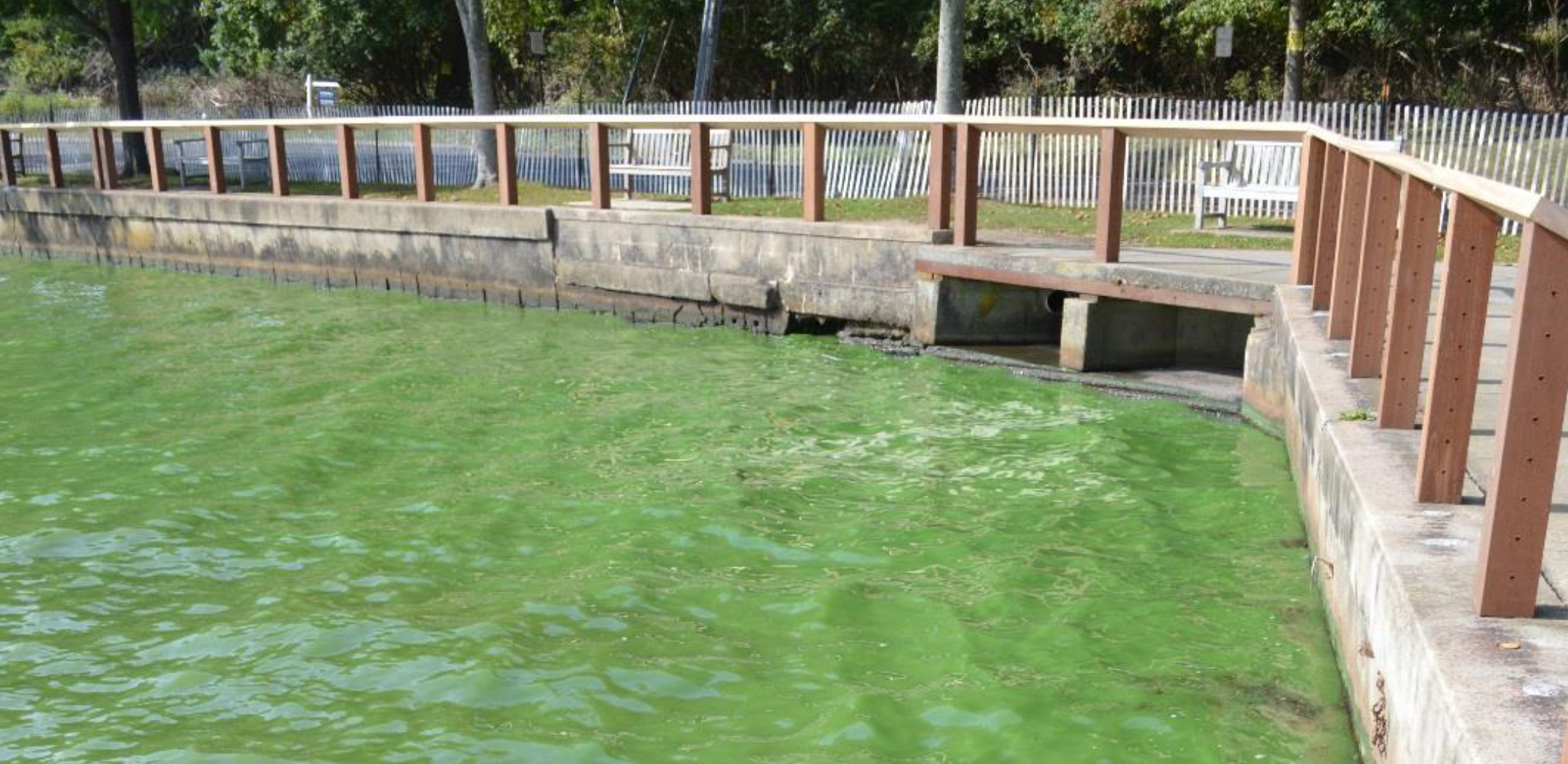Harmful Algal Bloom Action Plan
Harmful algal blooms (HABs), primarily within ponded waters (i.e., lakes and ponds) of New York State, have become increasingly prevalent in recent years and have impacted the values and services that these resources provide.
HABs contain the toxin microcystin and are formed by excess nitrogen in water bodies. In the case of Lake Agawam and polluted lakes and ponds on the East End, the source of that excess nitrogen comes from septic waste and lawn fertilizer.

Harmful algal blooms in freshwater generally consist of visible patches of cyanobacteria, also called blue-green algae (BGA). Cyanobacteria are naturally present in low numbers in most marine and freshwater systems. Under certain conditions, including adequate nutrient (e.g., phosphorus) availability, warm temperatures, and calm winds, cyanobacteria may multiply rapidly and form blooms that are visible on the surface of the affected waterbody. Several types of cyanobacteria can produce toxins and other harmful compounds that can pose a public health risk to people and animals through ingestion, skin contact, or inhalation. The NYSDEC has documented the occurrence of HABs in Lake Agawam and has produced this Action Plan to identify the primary factors triggering HAB events, and to facilitate decision-making to minimize the frequency, intensity, and duration of HABs as well as the effects that HABs have on both lake users and resident biological communities.
—Department of Environmental Conservation, April 2020
HABS are dangerous on multiple levels. Cyanobacteria, or the toxic blue green algae in harmful algae blooms, contain the toxin microcystin which kills humans, aquatic life and pets. It is in the water itself and becomes aerosolized. It deoxygenates water leading to a viscous cycle. If we don’t take dramatic steps to eliminate HABS, they will destroy the water that surrounds and sustains us.
LAC partnered with the DEC, town and village officials and other environmental groups to develop a long term remediation plan for Lake Agawam that can be used as a model for other water bodies in NY State. Please read the following to learn what we are planning to do together to clean the Lake and restore its watershed.


